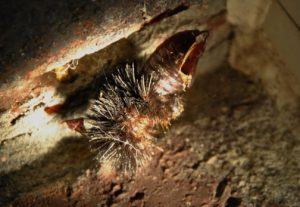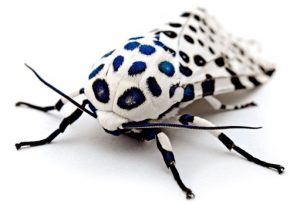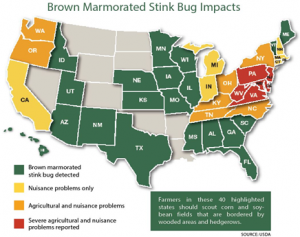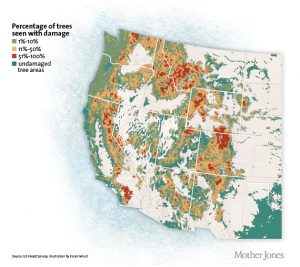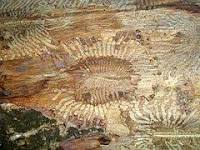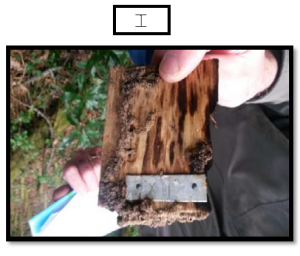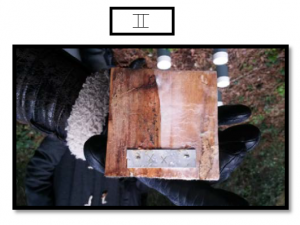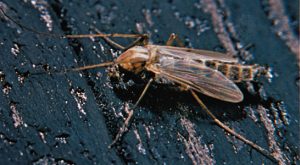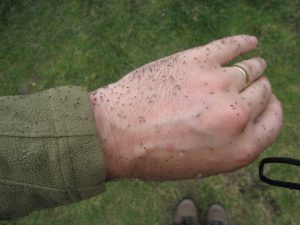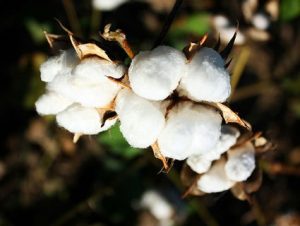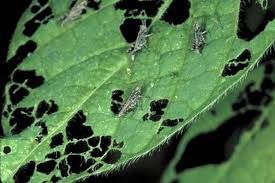Agriculture is the backbone of the economic sector of a country. Also, agriculture  was the key development in the rise of sedentary human civilization, whereby farming of domesticated species created food surpluses that nurtured the development of civilization. Agriculture sector provides us with one of the basic requirement of life i.e. food. Hence the damage caused to this sector directly or indirectly affects each sector of a country.
was the key development in the rise of sedentary human civilization, whereby farming of domesticated species created food surpluses that nurtured the development of civilization. Agriculture sector provides us with one of the basic requirement of life i.e. food. Hence the damage caused to this sector directly or indirectly affects each sector of a country.
Recently a new threat to this sector is of whiteflies. Whiteflies, the tiny creatures have a wingspan of less than 3 mm and a body length of 1 mm to 2 mm. More than 1550 species of whiteflies have been described which typically feed on the undersides of plant leaves. In warm or tropical climates and especially in greenhouses, whiteflies present major problems in crop protection. Worldwide economic losses are estimated at hundreds of millions of dollars annually.
 Whiteflies feed by tapping into the phloem of plants, introducing toxic saliva and decreasing the plants’ overall turgor pressure. Since whiteflies congregate in large numbers, susceptible plants can be quickly overwhelmed. Further harm is done by mold growth encouraged by the honeydew whiteflies secrete. This may also seriously impede the ability of farms to process cotton harvests.
Whiteflies feed by tapping into the phloem of plants, introducing toxic saliva and decreasing the plants’ overall turgor pressure. Since whiteflies congregate in large numbers, susceptible plants can be quickly overwhelmed. Further harm is done by mold growth encouraged by the honeydew whiteflies secrete. This may also seriously impede the ability of farms to process cotton harvests.
Cotton crops are called as the cash crops and they are severely attacked by the whiteflies. Following are the evidence for the same.
Whitefly affects a fraction of cotton crops: Punjab Govt.
24 Aug 2017
Merely 18.1 hectares of land under cotton cultivation out of the total area of 3.82 lakh hectares have been affected by whitefly pest in Punjab, as per a report formulated by the agriculture department of the state.
In Bathinda, only 3.6 hectares of an area was affected out of the total area of 1, 40,000 hectares, while only 10.2 hectares was infested by the pest in Mansa out of the total area of 86,010 hectares, as per the report.
In Sri Muktsar Sahib, the total area under cotton cultivation was 64,608 hectares and only 1.6 hectares were affected, whereas Fazilka reported damage to 2 percent of the land out of 74,655 hectares. In Barnala, merely 0.7 percent of the land out 5,460 hectares was infested by whitefly. The infestation was not seen in Faridkot, Moga, and Sangrur.
India’s cotton yield to decline on whitefly, pink bollworm attacks
From north to west, farmers seek protection from pest attacks to improve productivity
Dilip Kumar Jha | Mumbai Last Updated at August 10, 2017, 01:01 IST
In a major disappointment for new entrant farmers, cotton crop has come under severe pest and bollworm attacks in major producing states, which is sparking fears of a sharp decline in India’s fiber productivity this Kharif season.
While a substantial cotton area came under whitefly attack in Punjab and Haryana, pink bollworm was reported to have attacked standing crop in Maharashtra, Andhra Pradesh, and Gujarat. Consequently, analysts have started revising estimates of cotton output growth for the current season to 4-5 percent now from 10 percent earlier on a sharp increase in acreage.
Acting immediately to avoid farmers’ menace, the government of Maharashtra, according to sources, has ordered seed firms to pay a compensation of Rs 36, 83,000 to farmers in the state.
Whitefly Alert
Posted on July 6, 2017, by Phillip Roberts
Silver leaf whitefly (SLWF) infestations are being observed in cotton in parts of Georgia. Historically SLWF is a localized pest, requiring management in a relatively small geographic area. High populations of SLWF were observed during the fall of 2016 and the mild winter resulted in higher than normal populations surviving the winter.
It is likely that timely intervention with SLWF insecticides will be needed in areas which have experienced SLWF in previous years (all fields are at risk, not just late planted as in most years) and perhaps areas which have rarely observed SLWF will be infested in 2017. On cotton during the summer, SLWF complete a generation in about 2 weeks.
Such a huge nuisance of this tiny species to the agriculture sector cannot be neglected. The pesticides and insecticides are proven to be ineffective against them. However, these methods are hazardous methods causing harm to other non-targeted species as well as to the crops.
C Tech Corporation can offer an eco-friendly solution to this problem. Our product Combirepel™ is a low-toxic, non-hazardous and insect aversive. Our product work on the mechanism of repellence and they do not harm or kill the target species.
Our product works on the mechanism of repellency. It temporarily inhibits the mating cycle of the insects. The product impairs the ability of the insects to reproduce, that is the insects will not lay eggs or the laid eggs will be infertile. The product causes feeding disruption in an insect by triggering an unpleasant reaction within the insect which might try to feed on the application. The product temporarily blocks the reproduction system of the insects by hindering the release of the vital hormones for growth.
The product available in the form of masterbatch can be incorporated into the base polymer of the polymeric applications like the agricultural films, mulches, irrigation pipes, grain storage bags, wires and cables, water pipes, etc. used in the agriculture sector to keep the pest away from the application.
The product available in the form of liquid concentrate can be mixed in paints and be applied on the concrete fence around farms, interior and exterior of warehouses used to stored agricultural produce etc. to keep these areas safe from these pests.
The product available in the form of lacquer can be used as a direct application. The lacquer can be applied to the already installed applications like the wires and cable, pipes, racks and pallets from stores rooms etc.
Combirepel™is thermally stable and does not degrade on exposure to heat and sunlight. It does not kill or harm the insect but repels them. It does not volatilize and does not degrade the soil. It is RoHS, RoHS2, ISO, REACH, APVMA, NEA compliant and FIFRA exempted.
Contact us at technical.marketing@ctechcorporation.com to keep the pests away.
Also, visit our websites:
http://www.ctechcorporation.com/
http://www.rodrepel.com/
http://www.termirepel.com/
http://www.combirepel.com/
Follow our Facebook pages at:
1] https://www.facebook.com/Combirepel-411710912249274/
2] https://www.facebook.com/Termirepel-104225413091251/
3] https://www.facebook.com/Rodrepel-120734974768048/
Follow us on our Twitter pages at:
1] https://twitter.com/rodrepel
2] https://twitter.com/termirepel
3] https://twitter.com/combirepel


